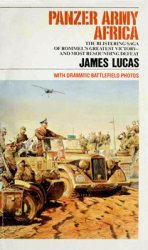The first major change in industrial development after
1870 was the substitution of steel for iron. New methods
for rolling and shaping steel made it useful in the construction
of lighter, smaller, and faster machines and engines
as well as for railways, shipbuilding, and armaments.
It also paved the way for the building of the first skyscrapers,
a development that would eventually transform
the shape of the cities of the West. In 1860, Great Britain,
France, Germany, and Belgium produced 125,000
tons of steel; by 1913, the total was 32 million tons.
Electricity was a major new form of energy that proved
to be of great value since it could be easily converted into
other forms of energy, such as heat, light, and motion, and
moved relatively effortlessly through space by means of
transmitting wires. The first commercially practical generators
of electric current were not developed until the
1870s. By 1910, hydroelectric power stations and coalfired
steam-generating plants enabled entire districts to
be tied into a single power distribution system that provided
a common source of power for homes, shops, and
industrial enterprises.
Electricity spawned a whole series of new products.
The invention of the incandescent filament lamp opened
homes and cities to illumination by electric lights. A revolution
in communications ensued when Alexander Graham
Bell invented the telephone in 1876 and Guglielmo
Marconi sent the first radio waves across the Atlantic
in 1901. Although most electricity was initially used for
lighting, it was eventually put to use in transportation. By
the 1880s, streetcars and subways had appeared in major
European cities. Electricity also transformed the factory.
Conveyor belts, cranes, machines, and machine tools
could all be powered by electricity and located anywhere.
The development of the internal combustion engine
had a similar effect. The processing of liquid fuels—petroleum
and its distilled derivatives—made possible the
widespread use of the internal combustion engine as a
source of power in transportation. An oil-fired engine was
made in 1897, and by 1902, the Hamburg-Amerika Line
had switched from coal to oil on its new ocean liners. By
the beginning of the twentieth century, some naval fleets
had been converted to oil burners as well.
The internal combustion engine gave rise to the automobile
and the airplane. In 1900, world production stood
at 9,000 cars; by 1906, Americans had overtaken the ini-
tial lead of the French. It was an American, Henry Ford,
who revolutionized the automotive industry with the
mass production of the Model T. By 1916, Ford’s factories
were producing 735,000 cars a year. In the meantime,
air transportation had emerged with the Zeppelin airship
in 1900. In 1903, at Kitty Hawk, North Carolina, the
Wright brothers made the first flight in a fixed-wing plane
powered by a gasoline engine. It took World War I, however,
to stimulate the aircraft industry, and it was not
until 1919 that the first regular passenger air service was
established.
The growth of industrial production depended on the
development of markets for the sale of manufactured
goods. Competition for foreign markets was keen, and by
1870, European countries were increasingly compelled to
focus on promoting domestic demand. Between 1850 and
1900, real wages had increased in Britain by two-thirds
and in Germany by one-third. A decline in the cost of
food combined with lower prices for manufactured goods
because of reduced production and transportation costs
made it easier for Europeans to buy consumer products. In
the cities, new methods for retail distribution—in particular,
the department store—were used to expand sales of
a whole new range of consumer goods made possible by
the development of the steel and electric industries. The
desire to own sewing machines, clocks, bicycles, electric
lights, and typewriters was rapidly generating a new consumer
ethic that has become a crucial part of the modern
economy.
Meanwhile, increased competition for foreign markets
and the growing importance of domestic demand led to
a reaction against the free trade that had characterized
the European economy between 1820 and 1870. By the
1870s, Europeans were returning to the practice of tariff
protection in order to guarantee domestic markets for
the products of their own industries. At the same time,
cartels were being formed to decrease competition internally.
In a cartel, independent enterprises worked together
to control prices and fix production quotas,
thereby restraining the kind of competition that led
to reduced prices. Cartels were especially strong in Germany,
where banks moved to protect their investments
by eliminating the “anarchy of competition.” Founded in
1893, the Rhenish-Westphalian Coal Syndicate controlled
98 percent of Germany’s coal production by 1904.
The formation of cartels was paralleled by a move toward
ever-larger manufacturing plants, especially in the
iron and steel, machinery, heavy electric equipment, and
chemical industries. This growth in the size of industrial
plants led to pressure for greater efficiency in factory production
at the same time that competition led to de demands
for greater economy. The result was a desire to
streamline or rationalize production as much as possible.
The development of precision tools enabled manufacturers
to produce interchangeable parts, which in turn led to
the creation of the assembly line for production. In the
second half of the nineteenth century, it was primarily
used in manufacturing nonmilitary goods, such as sewing
machines, typewriters, bicycles, and finally, automobiles.
By 1900, much of western and central Europe had entered
a new era, characterized by rising industrial production
and material prosperity. Another part of Europe,
however, the backward and little industrialized area to
the south and east, consisting of southern Italy, most of
Austria-Hungary, Spain, Portugal, the Balkan kingdoms,
and Russia, was still largely agricultural and relegated by
industrial countries to the function of providing food and
raw materials. The presence of Romanian oil, Greek olive
oil, and Serbian pigs and prunes in western Europe served
as reminders of an economic division of Europe that continued
well into the twentieth century.




 World History
World History









